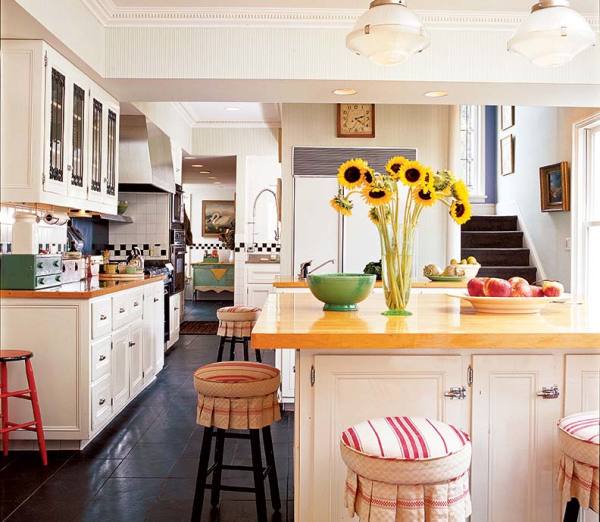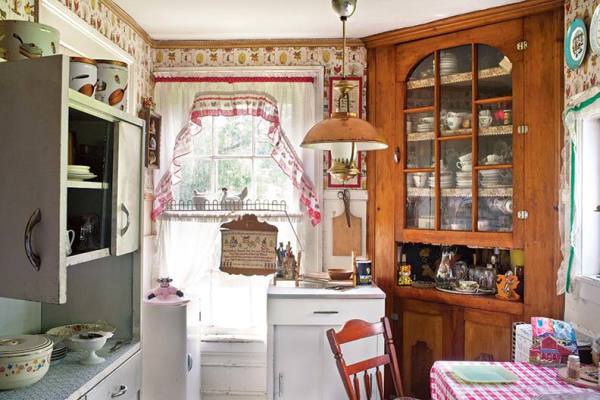
White-painted cabinets are timeless for the kitchen in a 1910 addition to a mid-19th-century house in Delaware County, New York. A bit of striped fabric adds color. (Photo: Gross & Daley)
Say “farmhouse kitchen,” and an image instantly springs to mind—a welcoming room that has evolved over time. Not everything matches; linoleum gives way to worn floorboards in the pantry, and the microwave oven sits on a 1940s metal cabinet.
We know the hallmarks: painted surfaces; a wide sink with a ceiling light overhead; a big iron stove; open shelves or even pegboard. Countertops are varied, butcher-block with laminate and a scrap of marble. Instead of an island, there is a big table at the center of the room. During the day it’s a work table, at night set for family meals.

Much evolved, a true farmhouse kitchen retains metal cabinets along with the old corner cupboard, long-ago wallpaper, and an electrified kerosene lantern on a pulley. (Photo: Gross & Daley)
Farmhouse isn’t a style, of course, but more a set of assumptions, like these: (1) Change occurred slowly—not in one big kitchen makeover, which rarely figured in a farm budget. Things don’t match; stuff stays put until it’s either antique or broken. (2) Time-tested elements are both practical and common. Soapstone and painted wood fit in, but so do Formica and an enameled gas stove. (3) The room is heavily used and so everything is at hand. Dish towels hang on a drying rack, while open shelves near the sink hold everyday dishes.
In other words, the farmhouse kitchen is home.










